This will shock you.
Despite being a Diabetes Dietitian, this is the smallest page on the blog!
Why?
I have created an Interactive carb counting guide packed with videos, examples, and little tests. Once you complete the guide, working out the carbs for any meal will be easy.
Here’s a taster of what’s included.
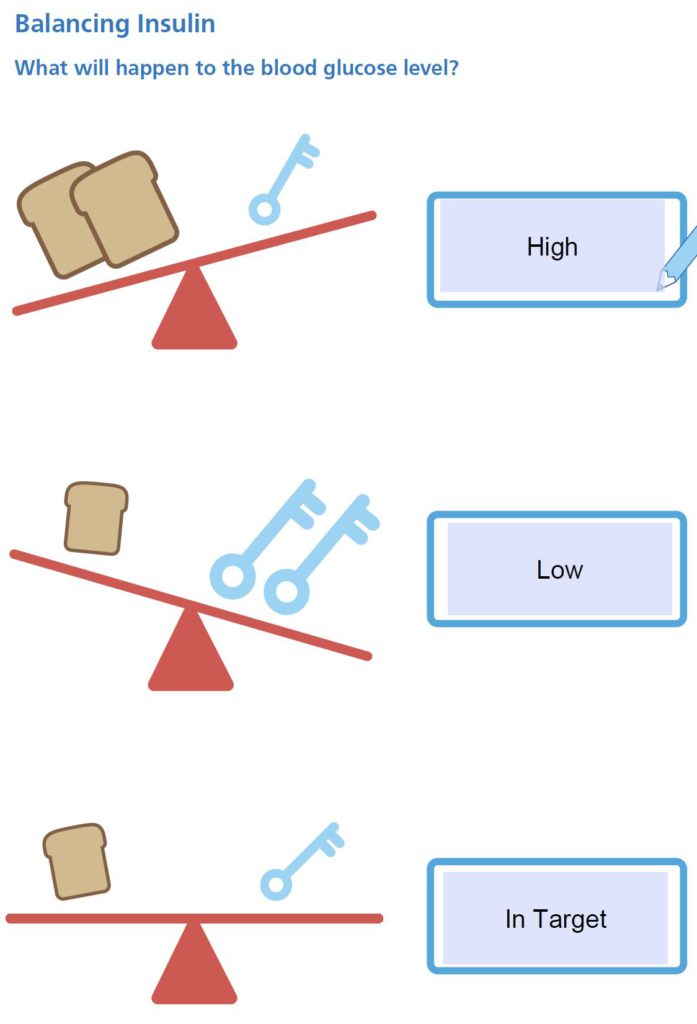
Basic table of what to count
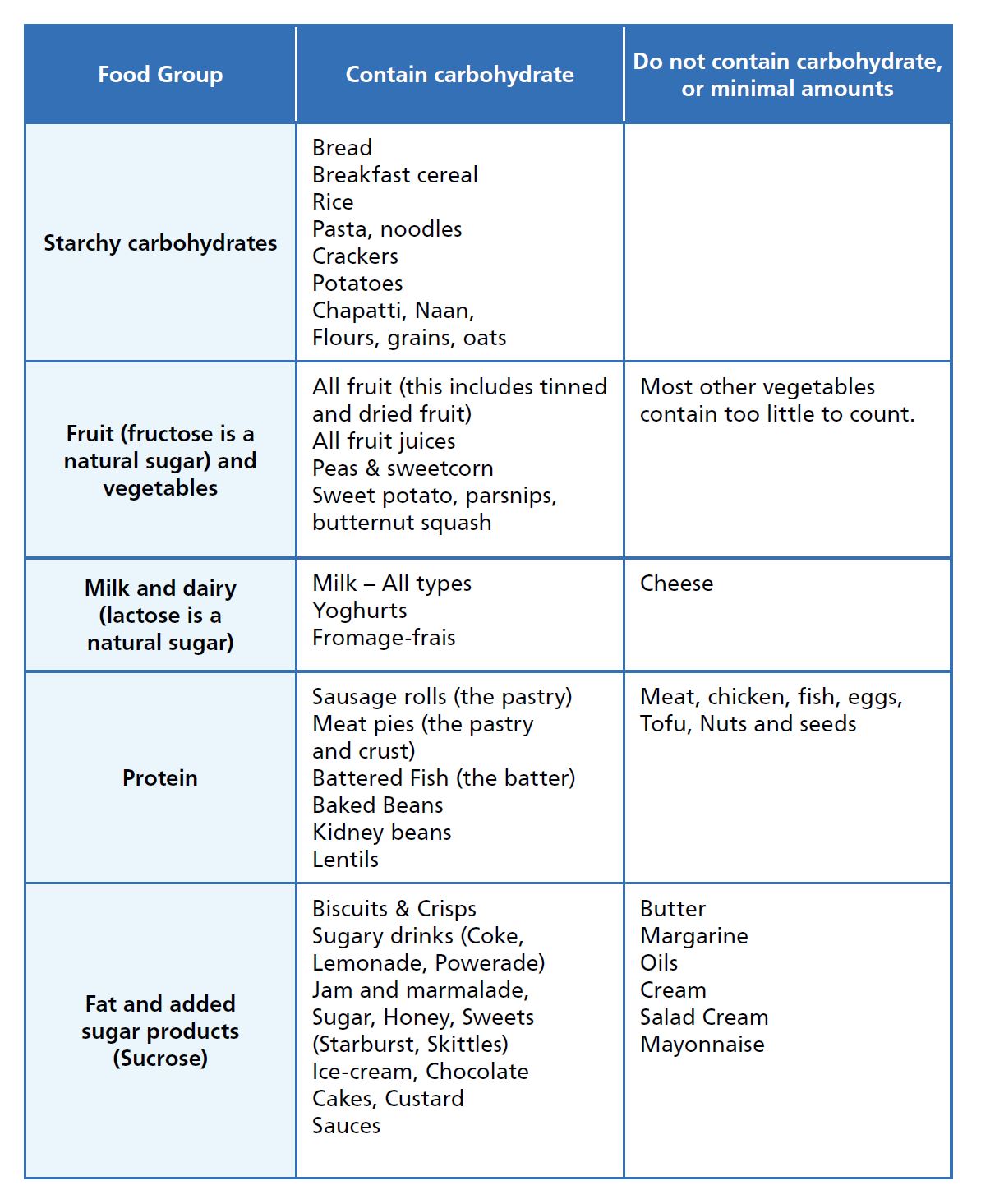
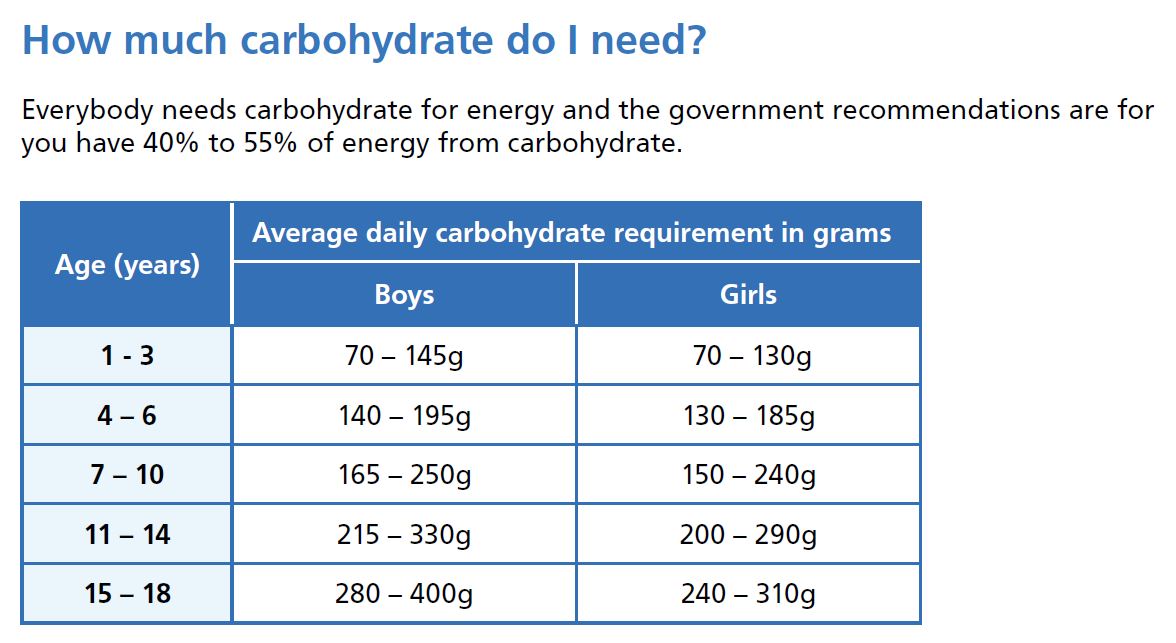
Dani, I am sure you think these carb amounts sound high. After all, you have seen me do all sorts of low-carb testing. I did the 120-day from low to high carb experiment, I went full-on keto for six months, and I used to keep carbs to 150g or less until 2019.
In the Mealtime Insulin Guide and the 120-day experiment, I get into the details of the million-dollar food question of type 1 diabetes:
Should I go low carb?
If you had asked me before mastering Dynamic Glucose Management, I would have said to aim for 20% of daily energy intake from carbs, maximum.
That is what I followed until 2019, only having 150g per day maximum, because it made my glucose level really easy to manage.
Now, I use fast movers of glucose between meals to stop highs and prevent lows, I am much more liberal. I eat 250g per day on average, which is 35-40% of my daily energy intake. I hit 99% time in range (4.0-10.0mmol/L or 70-180mg/dL) and almost 80% time in non-diabetic range (3.3-6.7mmol/L or 60-120mg/dL).
Seems you can have your cake and eat it using Dynamic Glucose Management.
My position for Grace and Jude would be to aim for 40% of daily energy intake from carbs.
Working out carbs using the Carbs and Cals resources
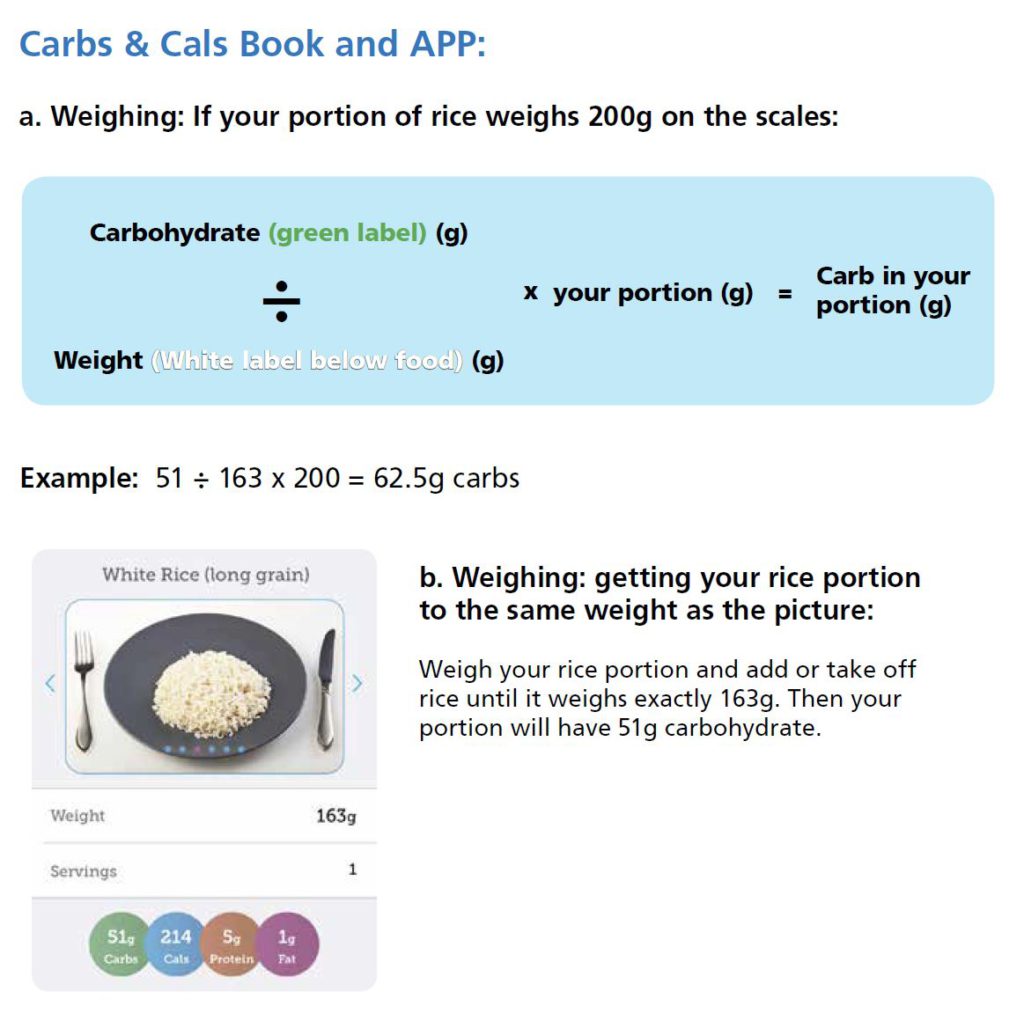
Working out carbs from a food label
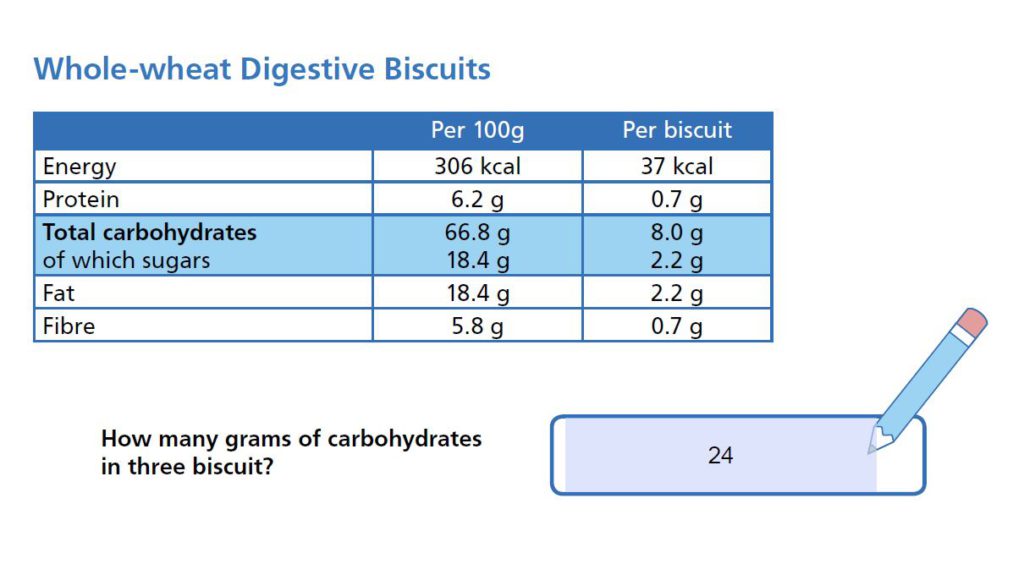
Working out carbs using food labels with 100g measurements
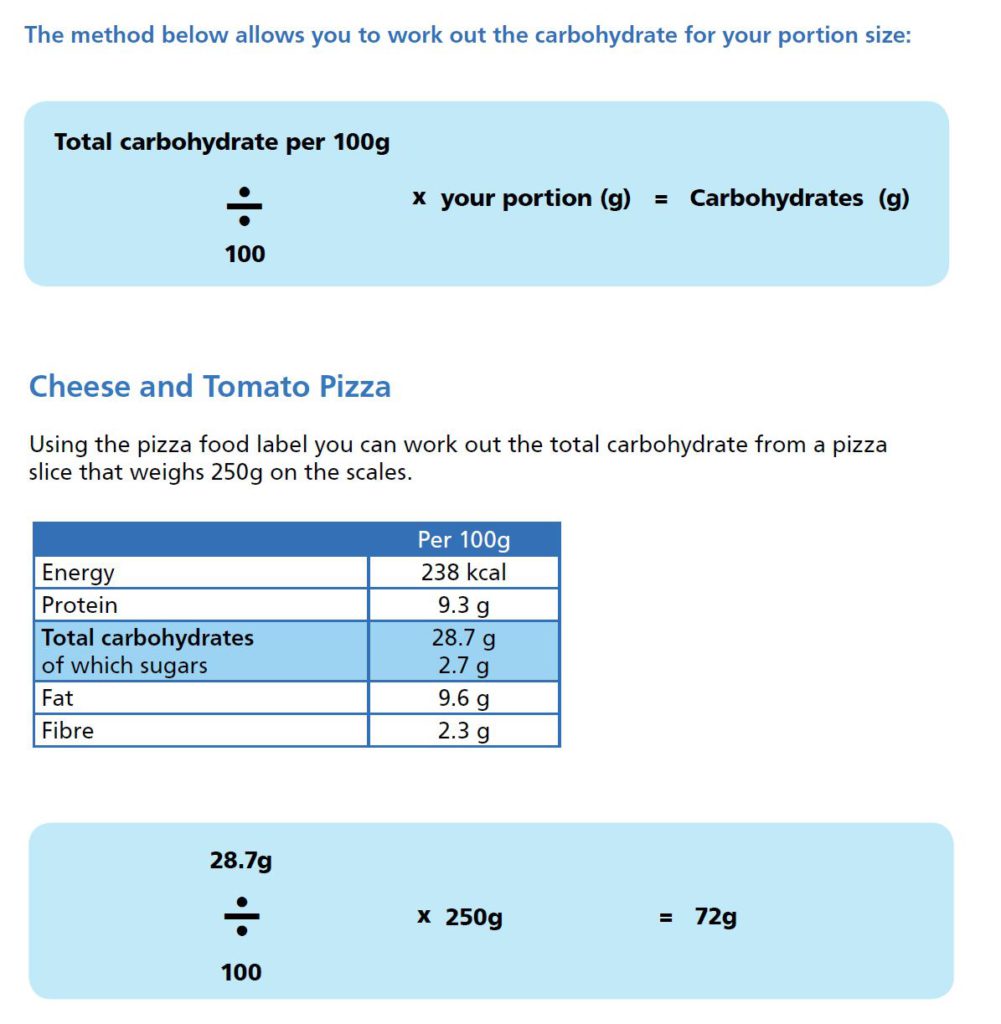
Dani, I hope you find the Interactive carb counting guide useful.
I think you may be surprised to hear my thoughts on carb counting.
The Pros:
- It helps calculate a mealtime insulin bolus that is close-ish to the glucose absorbed from the meal.
- It’s very simple to do and easy to teach to many family members.
- Children can get involved in working out insulin doses from an early age.
The Cons:
- The most important message of three balanced meals is often replaced by “eat what you like, like what you eat, just count the carbs and give the insulin” – Stinking advice!
- It’s far too simplistic.
- It creates a false sense of security.
- It does not account for the insulin resistance impact of high-fat meals and many other dietary factors that are detailed in the Mealtime Insulin Guide.
- It pushes people to eat processed and packaged food because it’s easy to count.
Rant over.
Let’s move on to the most important food message.
Next step: Three Balanced Meals.
